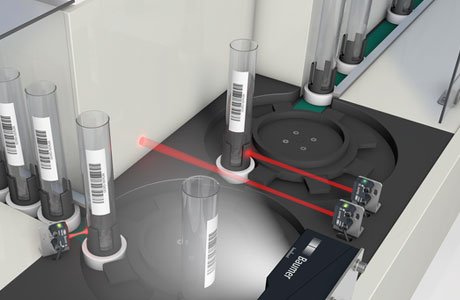Key Takeaway
Photoelectric sensors are crucial for improving efficiency and safety in industrial applications. They detect objects and measure distances, ensuring accurate positioning on production lines. This enhances quality control and helps streamline manufacturing processes.
In addition, these sensors are vital for safety systems, stopping machinery when an object or person is detected in a danger zone. Their reliability and versatility make them indispensable across various industries, improving both automation and safety.
The Impact of Photoelectric Sensors on Industrial Automation
In the world of industrial automation, the impact of photoelectric sensors cannot be overstated. They are used across numerous sectors, ranging from manufacturing to packaging, due to their ability to detect objects quickly and accurately. With industrial automation focusing on increasing production rates and reducing human error, photoelectric sensors play a pivotal role in keeping operations smooth.
Imagine an automated assembly line—without sensors, how would the system know when an object has passed a certain point or whether a component is missing? Photoelectric sensors are the unsung heroes in these scenarios, providing the necessary feedback that machines rely on. Whether it’s detecting objects on a fast-moving conveyor or ensuring precise positioning during robotic operations, these sensors ensure that each part of the system functions in harmony.

Benefits of Using Photoelectric Sensors for Precision and Accuracy
When it comes to precision and accuracy, photoelectric sensors are second to none. Their ability to detect even the smallest objects at high speeds makes them indispensable in industries that rely on minute measurements and flawless operations. For instance, in the electronics industry, photoelectric sensors are used to detect tiny components on a PCB (printed circuit board), ensuring the correct placement before soldering begins.
Unlike traditional mechanical sensors, photoelectric sensors offer non-contact detection, meaning there’s no physical interaction between the sensor and the object. This eliminates wear and tear and results in more reliable, long-term performance. With different types of sensors available—through-beam, retroreflective, and diffuse-reflective—these sensors can be customized for various tasks, whether it’s detecting objects over long distances or distinguishing between different surface materials.
For engineers new to the industry, it’s important to understand how these sensors bring accuracy to automation. By reducing human error and mechanical failure, photoelectric sensors help industries meet high-quality standards, ensuring every product that leaves the production line is flawless.
How Photoelectric Sensors Contribute to Safety and Efficiency
One of the primary reasons photoelectric sensors are so important in industrial environments is their contribution to both safety and efficiency. In manufacturing, where large machinery operates at high speeds, ensuring worker safety is paramount. Photoelectric sensors are often integrated into safety systems, such as light curtains or area scanners, which can halt machinery if a person or object enters a dangerous zone.
For example, in an automated welding system, photoelectric sensors can be set up to create a virtual safety barrier. If someone crosses that barrier, the sensor triggers the machine to stop immediately, preventing accidents and ensuring the safety of workers. Similarly, these sensors are also used in conveyor systems to monitor product flow, ensuring that no bottlenecks or jams occur, thus enhancing operational efficiency.
New engineers should understand that photoelectric sensors not only protect workers but also protect equipment by preventing collisions and malfunctions. By automating safety measures and improving efficiency, industries can focus on achieving higher production rates without compromising safety.
Key Industries That Depend on Photoelectric Sensors
Photoelectric sensors are relied upon by various industries, each benefiting from their unique capabilities. In the automotive industry, for example, they are used extensively in assembly lines to detect the presence of car parts, ensuring that each piece is in the correct position before robotic arms perform their tasks. In the packaging industry, photoelectric sensors help in verifying that products are properly sealed, labeled, and ready for shipment.
In the food and beverage industry, where hygiene is a critical factor, photoelectric sensors provide a non-contact way to monitor production lines, ensuring that items are processed and packaged without contamination. Additionally, in the electronics industry, they are used for tasks like component placement and quality assurance, where high precision is essential.
For new engineers, recognizing the versatility of photoelectric sensors across these industries highlights their importance. From ensuring product quality to enhancing safety and streamlining operations, these sensors are integral to the success of many industrial sectors.
The Future Importance of Photoelectric Sensors in Emerging Technologies
As industries move towards smart factories and the adoption of Industry 4.0 technologies, the role of photoelectric sensors is set to grow even further. Emerging technologies like AI and IoT are transforming traditional automation systems, and photoelectric sensors are becoming more intelligent as a result. These sensors can now not only detect objects but also collect data that can be analyzed to improve processes, predict maintenance needs, and ensure more efficient operations.
For example, smart photoelectric sensors integrated with IoT can communicate with other systems in real-time, allowing machines to adjust operations automatically based on the data received. This kind of adaptability is essential as industries become more interconnected and data-driven. In the future, photoelectric sensors will play a critical role in predictive maintenance, helping machines avoid breakdowns by alerting operators before issues arise.
For engineers entering the workforce, understanding how these sensors will evolve is crucial. They will no longer just be passive components but active participants in decision-making processes, helping industries become smarter, faster, and more reliable.
Conclusion
Photoelectric sensors are not only vital for today’s industrial operations but will also be central to future innovations. Their ability to enhance precision, safety, and efficiency makes them indispensable in automation. As industries embrace smart technologies, these sensors will continue to evolve, playing a more significant role in ensuring seamless operations.
For new engineers, understanding the importance of photoelectric sensors and their wide range of applications is essential for success in the field of industrial automation. Whether it’s improving safety, boosting efficiency, or preparing for future technological advances, photoelectric sensors are an integral part of modern and future industries.
